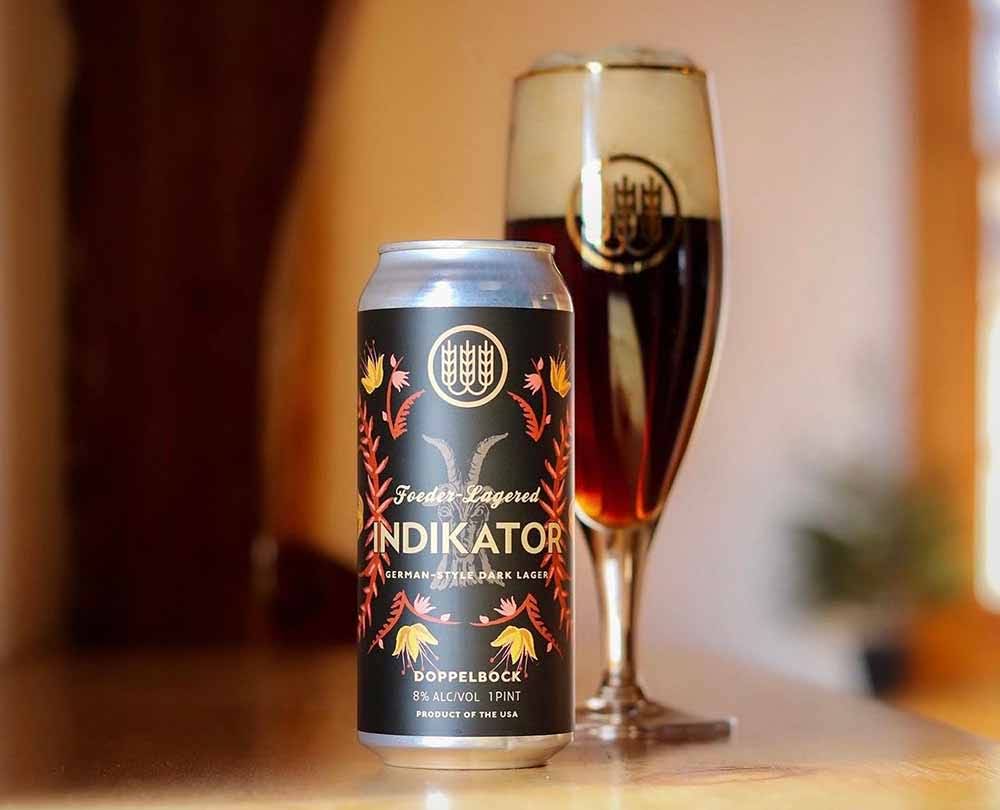
We’ve extensively covered old-world classic styles, many of which trace back to Germany. Whether it’s a beer from a specific region like Kölsch or Berliner Weisse, named after a color like a pale helles or pitch-black Schwarzbier, or seasonals like Festbier or Märzen, Germany has no shortage of quality beers that craft brewers in the U.S. love to emulate. Doppelbock is another one.
A bigger, higher ABV variation of the German-style bock beers, doppelbock translates to “double bock.” Originally brewed by Munich-based monks as a lower-ABV option for consumption at the monastery, bocks have evolved into a robust style adored by many.
We chatted with experts in the style from Schilling Beer Company, Tröegs Independent Brewing, and Goldfinger Brewing Company to get their take on the style, what ingredients make for a great one, and the top considerations to be aware of when brewing it.
(Above photography courtesy of Zac Porter | Schilling Beer Co.)
What We’ll Cover in This Piece:
If You're Not Using Ollie, You're Paying Too Much
If you're currently using a brewery software that isn't Ollie, you're paying too much. We know this because every brewery that switches to Ollie tells us that they're saving hundreds, if not thousands of dollars.
Learn more and start saving today:
How the Experts Define Doppelbock
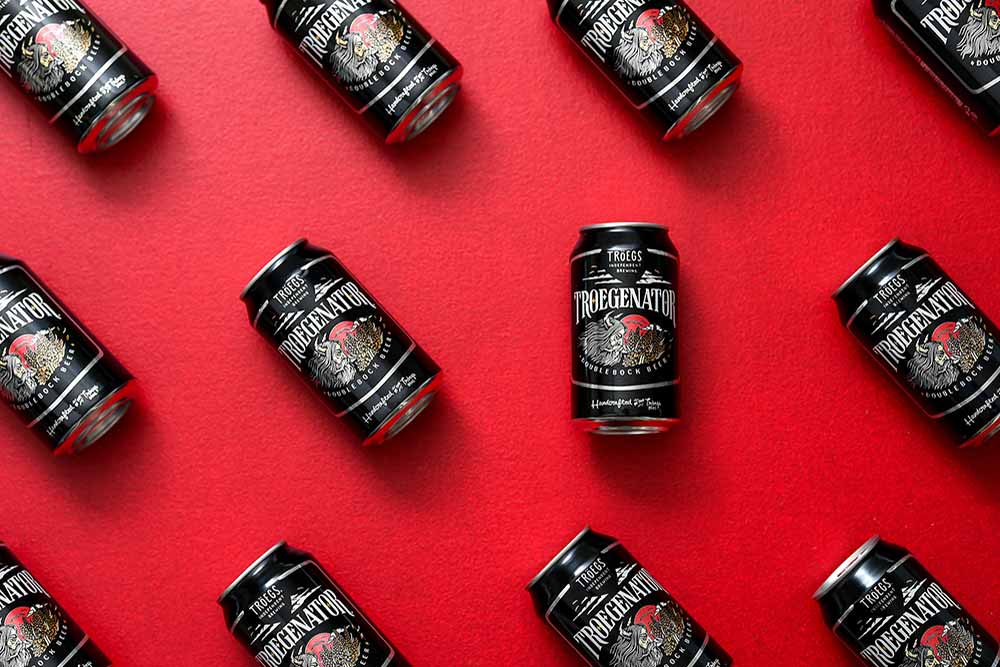
Photography courtesy of Tröegs Independent Brewing
Tröegs Brewmaster and Co-Founder John Trogner says he and his co-founding brother were inspired to brew a doppelbock after visiting the German-based monastic brewery Andechs. They learned that German beers are generally soft, very simple, yet very complex.
“They take a few ingredients—three or four types of malts, yeast, and water—and create these complex and super-interesting beers,” Trogner says. “We were inspired by that and brought it back with us. Artistic expression often comes from experience. Coupled with our geeky science side is a need to understand why things taste the way they do.”
Schilling Head Brewer Ryan Murphy says he likes all doppelbock beer, but there is one he prefers the most.
“The doppelbock I want to drink the most is a darker brown version with reddish highlights, deep malt character with toasted bread, and some gentle dark fruit fruit leather flavor, with very little or no caramel,” Murphy says. “Our version has some sweetness but is not heavy or lingering.”
Top Considerations When Making Doppelbock
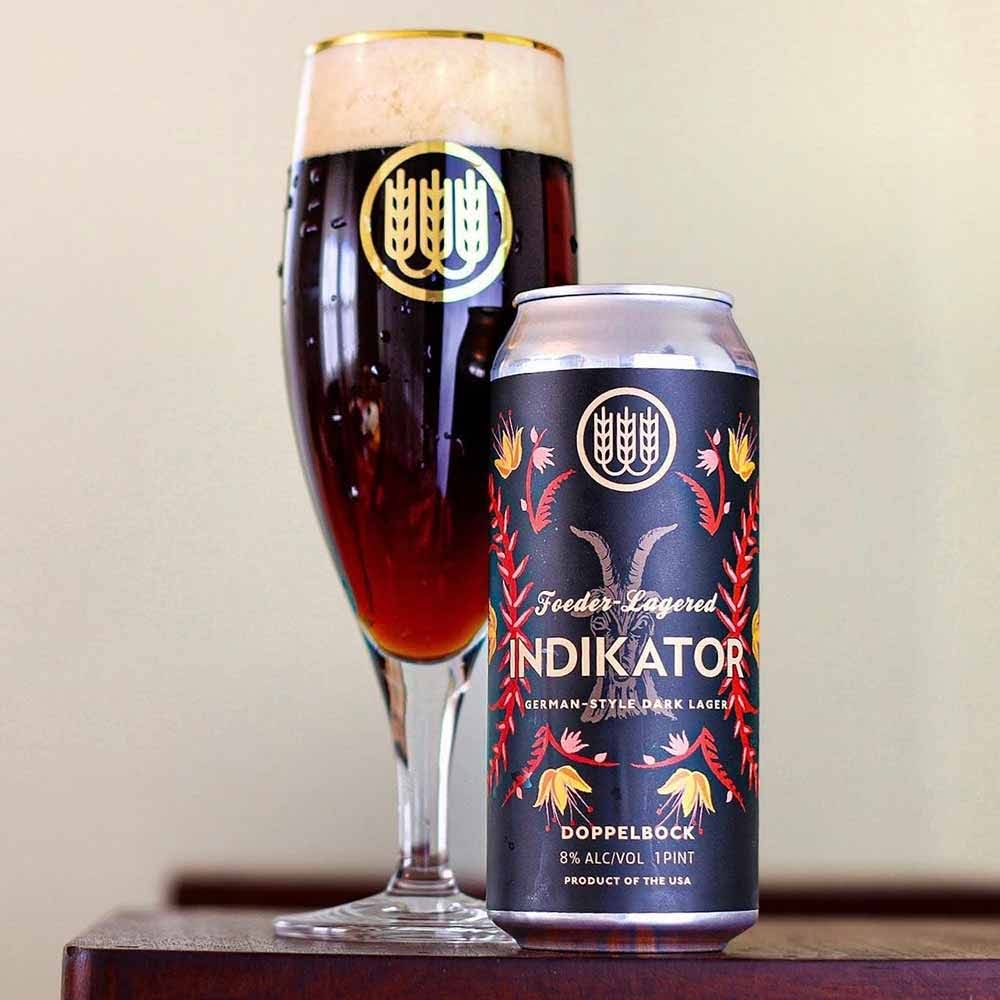
Photography courtesy of Zac Porter | Schilling Beer Co.
Murphy says brewers need to be “dialed in” on several elements to execute a quality doppelbock.
“Brewers need to ensure that water profile, mash temperature and pH, and yeast health are all dialed in, as this can be a more challenging wort for yeast to fully ferment,” Murphy says. “An under-attenuated doppelbock quickly gets to the cloyingly sweet side and can be a turnoff for many drinkers.”
Murphy says the water profile could be challenging to nail, depending on the source.
“Blending with [reverse-osmosis (RO)] water can make it easier to achieve if you have very hard water or high residual alkalinity,” he says.
Goldfinger Owner and Brewer Tom Beckmann says that it’s all about a strong fermentation.
“You want to avoid higher alcohol production and keep a clean fermentation profile so the aromas and flavors are not muddled,” he says. “Pitch a lot of yeast and give it time.”
Trogner has a more intangible approach.
“You need to start by picturing the perfect doppelbock beer in your head,” Trogner says. “Do you want a drier, crisper version or one that’s chewy with caramel and raisin notes?”
Trogner adds, “Decide which side of the fence you want to land on. I personally like the dry and crisp version.”
Trogner says a great doppelbock is malty, but bright, which he says is a “super challenging” balance to find.
“There are four components you have to get right to nail a doppelbock,” Trogner says. “Water chemistry; using the kilned malts from Germany; just enough hops to brighten it up so it doesn’t become cloyingly sweet; and a well-planned mash.”
What Is the Ideal Water Chemistry for a Doppelbock?
Trogner says for its doppelbock, they shoot for water with a soft profile.
“We use ninety percent reverse osmosis water with the remaining ten percent being filtered tap water,” Trogner says. “Once we have that nice clean profile, we add calcium chloride to achieve roughly fifty ppm calcium and one hundred ppm chlorides.”
Trogner notes that, when Tröegs moved from Harrisburg to Hershey, one of the things they tried to do was replicate the Harrisburg water.
“We loved the water in Harrisburg, but it changed throughout the year,” Trogner says. “In Hershey, we’re actually stripping the water and creating the perfect Harrisburg water without those subtle inconsistencies.”
Trogner adds that every beer they brew, including its doppelbock, Troegenator, starts with a unique water recipe.
“So, we build the base water for each beer from the ground up,” he says. “The first step is carbon filtration to remove chlorine. Then reverse osmosis pulls out other impurities. From there, we fine-tune by adding minerals.”
Murphy says water chemistry depends a lot on how the water is treated.
“I recommend targeting a Munich water profile with a relatively high ratio of bicarbonate ions to chloride and sulfate,” Murphy says. “This will have an alkalinity expressed as CaCO3—in the range of one hundred eighty to two hundred twenty-five ppm but a residual alkalinity of seventy-five to ninety.”
Achieving this, however, could be challenging.
“Hitting this profile typically requires using a water ion calculator or spreadsheet as the impacts to mash pH can be significant,” Murphy notes. “Thankfully, there are several free tools online to help guide you through the process.”
Beckmann, like Murphy, recommends following the water profile of Munich “with some hardness to mimic the origins of the beer.” Treatment will be different for each brewery based on the local water profile.
The rough profile to target, according to Beckmann, is eighty ppm of calcium ion, five ppm of magnesium ion, twenty-five ppm of sodium, seventy-five ppm of chloride, eighty ppm of sulfate, and one hundred ppm of bicarbonate.
What Should the Grist Bill Be for a Doppelbock?

Photography courtesy of Tröegs Independent Brewing
“Munich malt, munich malt, and more munich malt,” Beckmann says. “Plus some caramunich.”
Beckmann says that a step mash is your friend on this, so you can really turn those sugars into fermentables.
“A typical German schedule of a 63 degrees Celsius rest followed by a 72 degrees Celsius rest should do the trick,” Beckmann says. “Fermentation will slow down as the alcohol rises, so make it as easy as possible for your yeast to access those sugars or you’ll be left with an undrinkable, sweet lager.”
Trogner doesn’t belittle the importance of the mash.
“The entire malt side of our brewery is built around brewing [Tröegs’ doppelbock] Troegenator,” says Trogner. “It really does encompass the entire soul of Troegs.”
Trogner says that many classic doppelbocks use a decoction mash to get the mouthfeel just right but adds that when the Tröegs team was working on the recipe for Troegenator—which uses 8,500 pounds of malted barley per one hundred-barrel batch—they weren’t able to do that decoction step.
“So we compensated with a complex, multi-step mash with rests at 138 degrees, 142 degrees, 148 degrees, 155 degrees, and 158 degrees Fahrenheit,” Trogner says. “I don’t know if it’s all needed, but once we nailed it, we didn’t mess with it.”
Trogner adds, “If I wrote the recipe today, I would probably use decoction.”
Trogner says the malt bill for their doppelbock includes a blend of pilsner, Munich, and chocolate malts as well as smaller portions of caramel, melanoidin, Special B, dark Munich, and Pennsylvania-grown Keystone Pale malts.
Murphy says that doppelbock should have a base grist of pilsner, Vienna, and/or Munich malts, with some specialty malts, depending on the desired final color and malt character.
“I like pils and light Munich for paler versions and pils and Munich 2 or dark Munich up to seventy percent for darker interpretations,” Murphy says. “After that, small percentages of your specialty malts Cara-Red, Cara-Munich if adding that caramel flavor, or very small additions of Carafa Special 1, 2, or 3 for depth of flavor and color.”
Murphy says that the ideal mash temp will vary based on the desired terminal gravity, “but as a general rule, I like 151 degrees Fahrenheit for paler versions that finish with a lower final gravity and 153 to 154 degrees Fahrenheit for darker versions finishing higher.”
He adds, “If possible, with your equipment, I highly recommend a decoction to achieve mash-out as the final step or multiple decoctions to step between beta and alpha rests.”
Murphy notes a way to add to the color without adding roastiness to the flavor. “Small additions of debittered black malts,” he says, “can lend a beautiful color without any roast or coffee bitterness, particularly when only added at sparge.”
How Many Hops Are Ideal for Making Doppelbock?

Photography courtesy of Zac Porter | Schilling Beer Co.Murphy says that his hop additions vary, whether brewing a light iteration or a darker version of doppelbock.
“With paler versions, I’m inclined to make a larger addition late in the boil or the whirlpool, around half a pound per barrel,” he says. “But with darker wort, I am very low, in the quarter-pound-per-barrel range in the whirlpool.”
Murphy says to definitely use Noble or Noble-derived hops, because the hop character should be restrained. He says the IBUs depend on a number of things, but the water is an important aspect of your bitter target.
“The high alcohol and malt character can easily handle up to thirty IBU without presenting as bitter as long as the water profile is on the softer side,” Murphy says. “If your water has high residual alkalinity, you will need to be more sparing with calculated IBUs, staying in the higher teens or low twenties, or blending RO water to reduce residual alkalinity.”
Trogner says they built their doppelbock recipe with German hops, adding them in two hot-side charges.
“Northern Brewer does all the heavy lifting as both the bittering charge and a light flavoring charge near the end of the boil,” Trogner says. “I find hops to be a big controller of the beer’s texture in a style like doppelbock. We want them to have a supporting role in this style but not to get in the way of the malts.”
Beckmann urges brewers not to be shy about using hops—but make sure to stick with European noble hops.
“You want the round yet soft bitterness of noble hops to combat some of the residual sweetness,” he says.
What Is an Ideal ABV and Lagering Time to Target for Doppelbock?
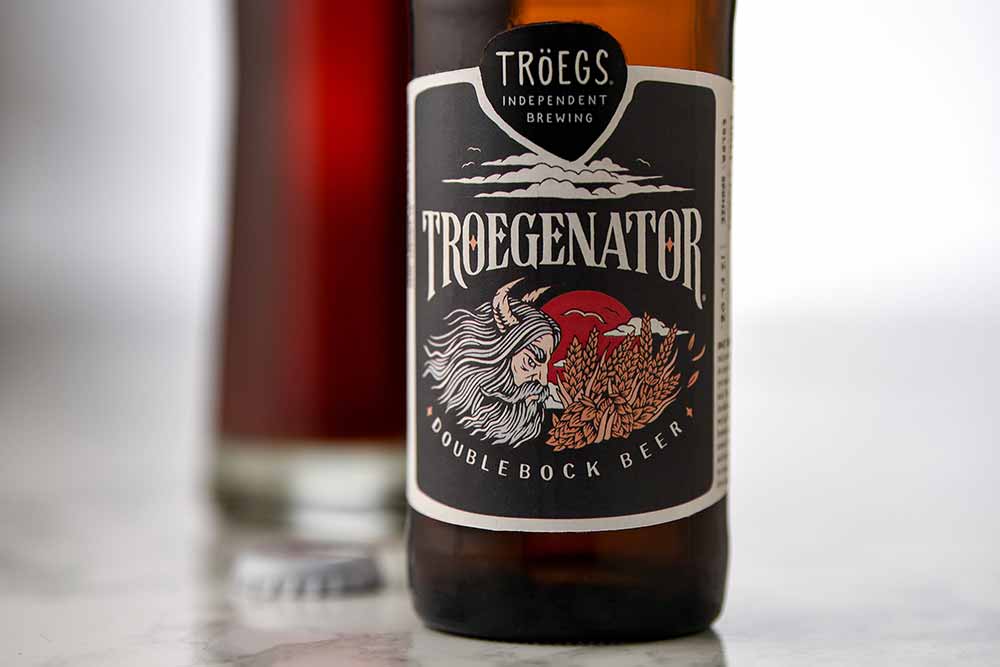
Photography courtesy of Tröegs Independent Brewing
Doppelbocks are meant to be higher in ABV. For Murphy, he has a large range of where he prefers his.
“I like the 8% to 9% ABV range,” Murphy says. “[That] provides a lot of opportunity for malt complexity while still being drinkable for more than a small pour.”
Getting that attenuation relies on good yeast, and Murphy says there are several quality bock-specific strains that do well.
“Please note the expected attenuation for the strain of choice and plan accordingly with your original gravity and expected ABV,” Murphy says. “I will say there is nothing wrong with using W34/70 as well. It’s a common house lager strain for a reason and is very capable of turning out an excellent doppelbock.”
Be sure to be patient with this. Murphy says the beer should ferment for around twenty-one days and then lager for a minimum of six weeks.
“You will usually notice continued improvements in smoothness and rounding of malt character for up to ten weeks,” Murphy says.
Trogner is near where Murphy is in his ABV preference, although a smaller range of 8% to 8.5% ABV.
“That mark really is the sweet spot,” Trogner says. “We wanted the malt complexity to shine through, but we also wanted to make sure it was refreshing and crisp without being cloyingly sweet or too boozy.”
Tröegs achieves an 8.2% ABV for Troegenator with its house lager strain, according to Trogner.
Beckmann says he prefers his doppelbock on the lower end of the ABV spectrum, around 7% to 8.5% ABV.
“When you’re in that range, you still get all the delicious rich maltiness,” Beckmann says. “But less cloying and more drinkable.”
Three Great Examples of a Doppelbock
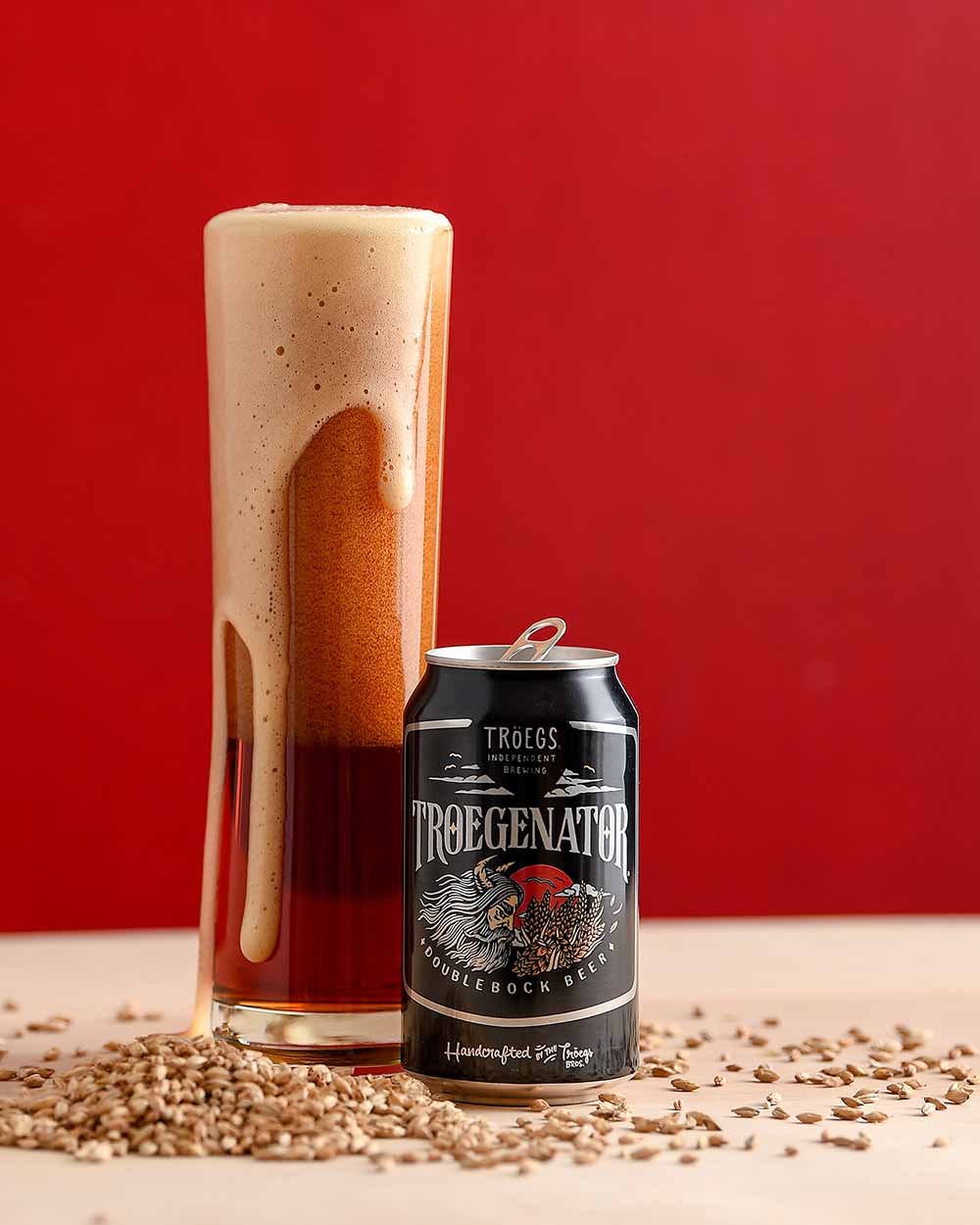
Photography courtesy of Tröegs Independent Brewing
Trogner says, “If I had to drink one beer for the rest of my life, it would be Troegenator.”
The Troegenator Doublebock is 8.2% ABV and has twenty-five IBUs. Tröegs says its beer is a tribute to the liquid bread style and describes it on its Untappd page as “thick and chewy with intense notes of caramel, chocolate, and dried stone fruit.”
Trogner points to Troegenator as a beer he would use to introduce his brewery to a new consumer.
“If I want to represent Tröegs to someone who hasn’t had it before, that’s one of the beers I make sure they try,” Trogner says. “To me, it’s really the heart and soul of Tröegs.”
Goldfinger has its Zlotonator doppelbock, which has been its staple for the brewery’s annual Dark Lager Day since 2021. The beer is 7.8% ABV and has twenty IBUs.
“We have continued to dial that beer in every year and have landed on a recipe that provides all of the richness a monk would want to tide them over during fasting while not being overly sweet,” Beckmann says. “Drinkability is the holy grail with this big lager.”
Murphy is proud of Schilling’s Indikator doppelbock. The 8% ABV beer—which has a 4.17 rating on Untappd—is a deep mahogany-colored beer lagered in Schilling’s American oak foeder.
“It has great malt character and brings some darker fruit aromas and flavors as well as a touch of caramel,” Murphy says. “The oak has a light toast and lends a very subtle vanilla and toasted marshmallow aroma, increasing the aromatic experience and lending another layer to the overall complexity of the beer.”
The beer is as good as it sounds, winning a recent Untappd Community Awards honor.



